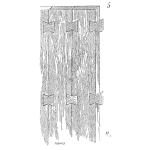
The title is a Statistician’s Lament. “Design of Experiments (DoE) is the design of any task that aims to describe or explain the variation of information under conditions that are hypothesized to reflect the variation.” [Wikipedia] Are you using DoE to design reliability tests? What do PH, GMDH, and |D|-optimality have to do with design of DoE of reliability tests?
[Read more…]












 Ask a question or send along a comment.
Please login to view and use the contact form.
Ask a question or send along a comment.
Please login to view and use the contact form.